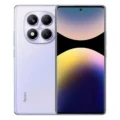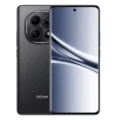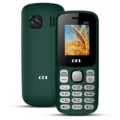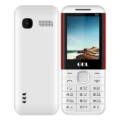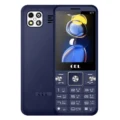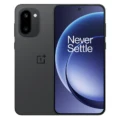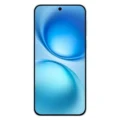Xiaomi Redmi K90 Pro Max
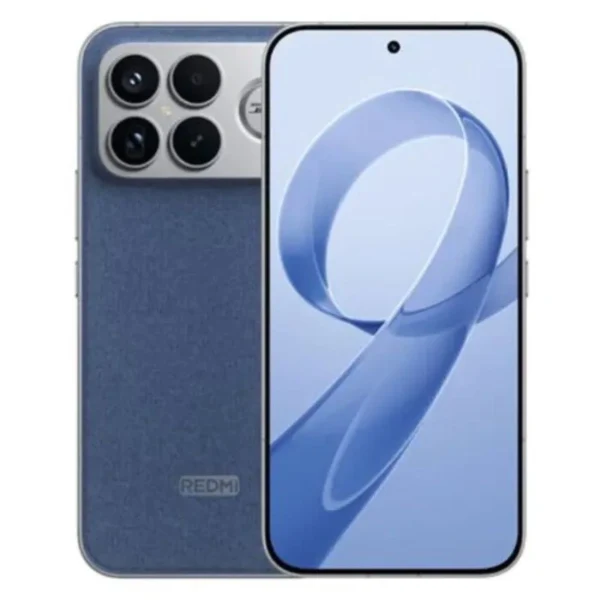

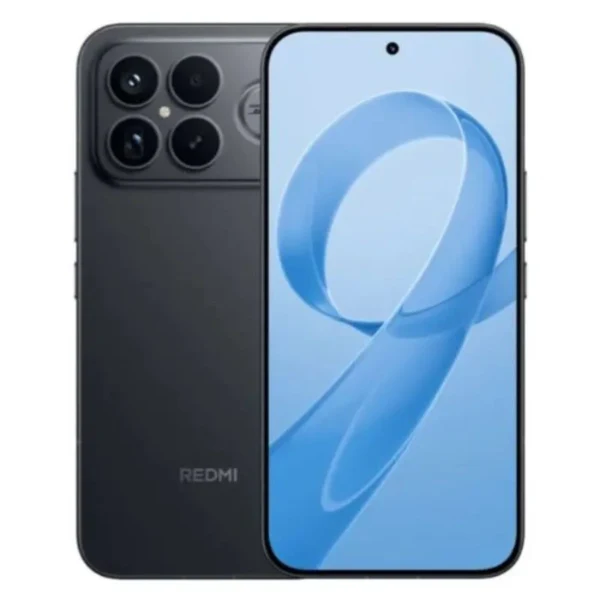
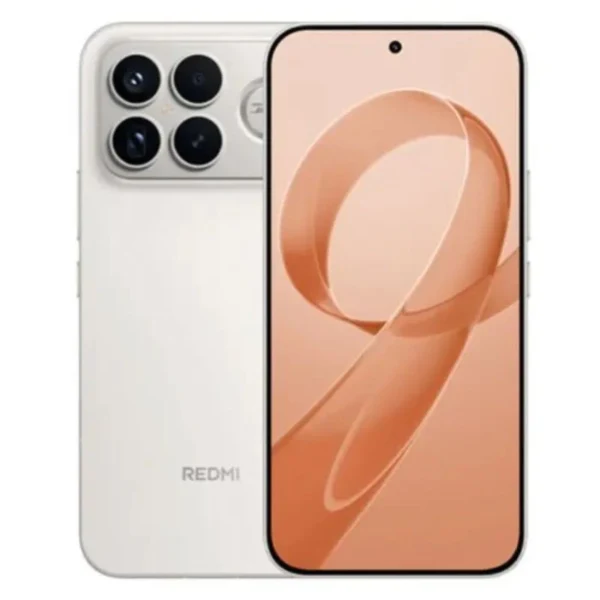
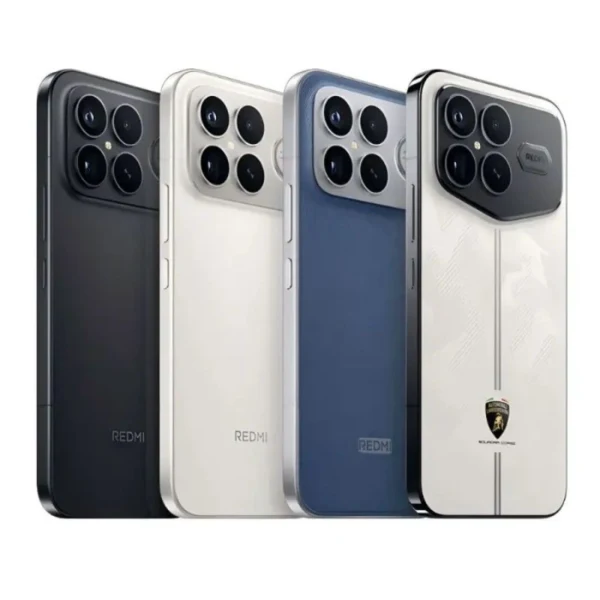
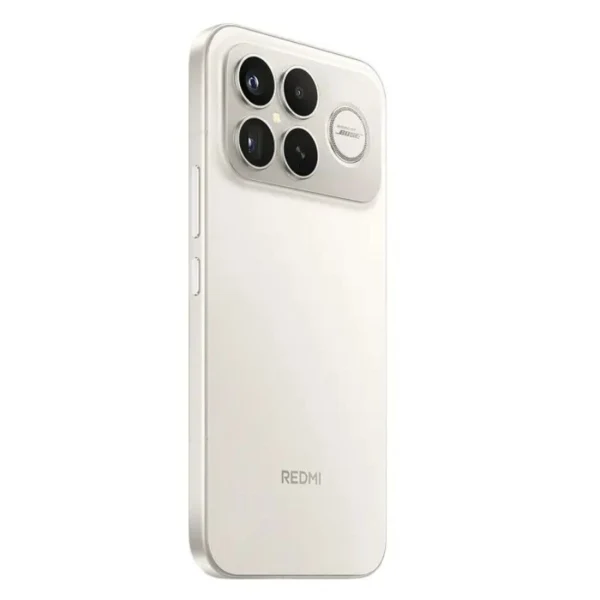
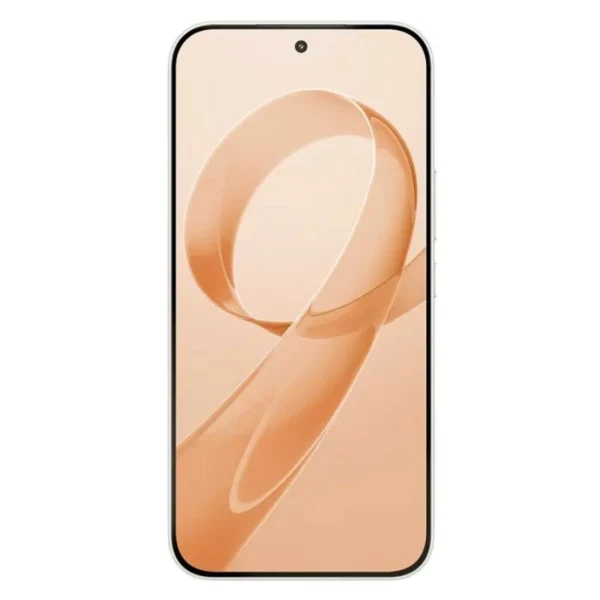
Redmi K90 Pro Max Available 2 Variant:
Full Specifications
Price in BD
| Unofficial | 12GB+512GB - 94,900 TK |
General Info
| Announced | 23 October, 2025 |
| Status | Available |
| Released | 23 October, 2025 |
| Brand | Xiaomi |
| Model | Redmi K90 Pro Max |
| Made By | China |
Network
| Technology | GSM / CDMA / HSPA / CDMA2000 / LTE / 5G |
| 2G bands |
GSM 850 / 900 / 1800 / 1900 |
| 3G bands | HSDPA 800 / 850 / 900 / 1700(AWS) / 2100 |
| 4G bands | 1, 3, 4, 5, 7, 8, 18, 19, 26, 28, 34, 38, 39, 40, 41, 42, 48, 66 |
| 5G bands | 1, 3, 5, 7, 8, 18, 26, 28, 38, 40, 41, 48, 66, 77, 78, 80, 81, 83, 84, 89 SA/NSA |
| VoLTE | |
| Speed | HSPA, LTE, 5G |
Body
| Dimensions | 163.3 x 77.8 mm |
| Thickness | 7.9 mm |
| Weight | 218 g (7.69 oz) |
| SIM Slot | Dual SIM |
| SIM SIM (Subscriber Identity Module) is a small card that contains mobile network subscriber's account information. This allows the phone using the card to attach to a mobile network. The SIM card is most commonly associated with GSM and UMTS mobile networks. Moving a SIM card from one phone to another allows a subscriber to switch mobile phones without having to contact their mobile network carrier. SIM cards can also be used by a phone to store limited amounts of data, such as phone numbers and text messages. | Nano-SIM + Nano-SIM |
| Build | Glass front (Dragon Crystal Glass), aluminum frame |
| Colors | Black, White, Denim Blue, Lamborgini White |
| IP Rating | IP68 dust tight and water resistant (immersible up to 1.5m for 30 min) |
Display
| Display Type Display Technology => A number of display technologies and types used in mobile phones => TFT (Thin Film Transistor), IPS (In-Place Switching), OLED (Organic Light Emitting Diode), AMOLED (Active-Matrix Organic Light-Emitting Diode), Super AMOLED (an even advanced version of AMOLED), Resistive Touchscreen (Resistive touchscreens contain two layer of conductive material with a very small gap between them which acts as a resistance), Capacitive Touchsceen (Capacitive touchscreen technology consists of a layer of glass coated with a transparent conductor) | LTPO AMOLED |
| Size | 6.9 inches, 116.6 cm2 |
| Screen to Body | ~91.8% |
| Features | 68B colors, 2560Hz PWM, Dolby Vision, HDR Vivid, HDR10+ |
| Brightness | 3500 nits (peak) |
| Refresh Rate | 144Hz |
| Resolution | 1200 x 2608 pixels |
| Aspect Ratio | 19.5:9 |
| Pixel Density Pixel Density (PPI) is refers to the concentration of pixels on a particular display, measured in pixels per inch (ppi). Pixel density is calculated by dividing the diagonal pixel resolution of a display by its diagonal size, higher pixel density better display quality. | ~416 ppi |
| Protection | Xiaomi Dragon Crystal Glass |
| Bezel-less | Yes with punch-hole display |
| Touch Screen | Capacitive Touchscreen, Multi-touch |
Performance
| Chipset Chipset is a group of integrated circuits designed to perform one or a more dedicated functions, often with real time computing constraints, Popular smartphones are equipped with more advanced embedded chipsets that can do many different tasks depending on their programming. | Qualcomm SM8850-AC Snapdragon 8 Elite Gen 5 (3 nm) |
| Fabrication | 3 nm |
| CPU CPU (Central Processing Unit) mostly known as processors, CPU processes instructions in order to carry out certain functions that make your device operate properly. Processors are often described as the brain of computers, smartphones and tablets, Smartphones and tablets rely on processors to carry out their every task, Processors are an incredibly important factor in selecting any type of computing device, including your smartphone. | Octa-core (2x4.6 GHz Oryon V3 Phoenix L + 6x3.62 GHz Oryon V3 Phoenix M) |
| CPU Cores | 8 cores |
| GPU GPU (Graphics Processing Unit) is a single-chip processor designed to rapidly manipulate and alter memory to accelerate the creation of images in a frame buffer intended for output to a display, This includes things such as lighting effects, object transformations, and 3D motion. | Adreno 840 |
| Architecture | 64-bit |
| OS | Android 16 |
| UI | HyperOS 3 |
Memory
| RAM RAM (Random Access Memory) is a type of computer memory that can be accessed randomly, any byte of memory can be accessed without touching the preceding bytes that allows information to be stored and accessed quickly from random locations. RAM is the most common type of memory found in computer systems, smartphones, tablets and other electronic devices. | 12 GB |
| RAM Type | LPDDR5X |
| ROM | 512 GB |
| Card Slot Memory Card Slot is a special slot for inserting a memory card. Memory cards allow you to expand the phone's built-in memory, A memory card (sometimes called a flash memory card or a storage card) is a small storage medium used to store data such as text, pictures, audio, and video, for use on small, portable or remote computing devices such as mobile phones, mp3 players, digital cameras. | No |
| UFS | 4.1 |
Main Camera
| Dual |
50 MP, f/1.7, 23mm (wide), 1/1.31", 1.2µm, dual pixel PDAF, OIS 50 MP, f/3.0, 115mm (periscope telephoto), 1/2.76", 0.64µm, PDAF (30cm - ∞), OIS 50 MP, f/2.4, 18mm, 102˚ (ultrawide), 1/2.88", 0.61µm |
| OIS | Yes |
| Features | Color spectrum sensor, HDR, panorama |
| Flash Flash Light => There is commonly two types of flash lights are used in camera mobile phones, LED Flash (LED flash offers lower power consumption with drive circuitry that takes up very little room, LEDs can be strobed faster than any other light source), Xenon Flash (xenon flash produces an extremely intense full-spectrum white light for a very short duration) | LED flash |
| Video Recording | 8K@30fps, 4K@30/60fps, 1080p@30/60/120/240/960fps, 720p@1920fps, gyro-EIS, HDR10+ |
| Autofocus | |
| Settings | Exposure compensation, ISO control |
| Zoom | 5x optical zoom |
Selfie Camera
| Single | 32 MP, f/2.2, 21mm (wide), 1/3.44", 0.64µm |
| Features | HDR |
| Video Recording | 4K@30fps, 1080p@30/60fps |
Sound
| Loudspeaker | |
| 3.5mm jack | |
| Others |
Tuned by Bose Bose 2.1 stereo sound system with a woofer 24-bit/192kHz Hi-Res & Hi-Res wireless audio |
Connectivity
| WLAN Wi-Fi is a popular wireless networking technology using radio waves to provide high-speed network connections that allows devices to communicate without cords or cables, Wi-Fi is increasingly becoming the preferred mode of internet connectivity all over the world. | Wi-Fi 802.11 a/b/g/n/ac/6/7, dual-band, Wi-Fi Direct |
| Bluetooth Bluetooth is a wireless communications technology for exchanging data between mobile phones, headsets, computers and other network devices over short distances without wires, Bluetooth technology was primarily designed to support simple wireless networking of personal consumer devices. | 5.4, A2DP, LE, LHDC 5.0, ASHA, MIHC |
| Positioning | GPS (L1+L5), BDS (B1I+B1c+B2a), GALILEO (E1+E5a), QZSS (L1+L5), NavIC, GLONASS |
| NFC NFC (Near field communication) is a set of standards for smartphones and similar devices to establish peer-to-peer radio communications with each other by touching them together or bringing them into proximity, usually no more than a few inches. | |
| Infrared Infrared connectivity is an old wireless technology used to connect two electronic devices. It uses a beam of infrared light to transmit information and so requires direct line of sight and operates only at close range. | |
| Radio | |
| USB | Type-C 3.2, Display Port, OTG |
Sensors
| Sensors Sensors are electronic components that detects and responds to some type of input from the physical environment. The specific input could be light, heat, motion, moisture, pressure and location, The output is generally a signal that is converted to use in computing systems, a location sensor, such as a GPS receiver is able to detect current location of your electronic device. | accelerometer, proximity, gyro, compass |
| Fingerprint | Under display, ultrasonic |
| Face Unlock | Yes |
Battery
| Battery Type Battery Type => Cell phones run on various kinds of batteries depending on the manufacturer, phone size or shape and features. There are basically four types of cell phone batteries => Lithium Polymer, Lithium Ion, Nickel Metal Hydride and Nickel Cadmium. | Si/C Li-Ion |
| Capacity Battery Capacity is a measure (typically in Amp-hr) of the charge stored by the battery, and is determined by the mass of active material contained in the battery. The battery capacity represents the maximum amount of energy that can be extracted from the battery under certain conditions. | 7560 mAh |
| Charging | 100W wired, PD3.0, QC3+, 100W PPS |
| Wireless | 50W wireless |
| Reverse | 22.5W reverse wireless |
Tests
PROS
- Display: LTPO AMOLED, 68B colors, 2560Hz PWM, 120Hz, Dolby Vision, HDR Vivid, HDR10+, 3500 nits (peak)
- Chipset: Qualcomm SM8850-AC Snapdragon 8 Elite Gen 5 (3 nm)
- Highest Video: 8K@30fps
- Supported: NFC, IF
- Fast Charging 100W
CONS
- Card slot Not Support
- No 3.5mm jack
- No FM Radio
Xiaomi Redmi K90 Pro Max Price in Bangladesh
Xiaomi Redmi K90 Pro Max is now available in variants 12GB+512GB. Now, Xiaomi Redmi K90 Pro Max’s Price 94,900 Taka in Bangladesh.
Xiaomi Redmi K90 Pro Max Overview
The Xiaomi Redmi K90 Pro Max is a bold step forward in smartphone craftsmanship. It features a Dragon Crystal Glass front, a sturdy aluminum frame, and comes in elegant colors like Black, White, Denim Blue, and Lamborghini White. The massive 6.9-inch LTPO AMOLED display is a visual masterpiece with 68 billion colors, Dolby Vision, HDR10+, and HDR Vivid. It achieves an incredible 3500 nits peak brightness and 144Hz refresh rate, ensuring ultra-smooth scrolling and gaming. With ~91.8% screen-to-body ratio, it’s nearly bezel-less, offering a true edge-to-edge viewing experience. The Dragon Crystal Glass protection adds superior scratch and drop resistance, making it as durable as it is beautiful.
Under the hood, the Redmi K90 Pro Max is powered by Qualcomm’s Snapdragon 8 Elite Gen 5 (3nm) processor one of the fastest mobile chips ever made. Its octa-core CPU (2×4.6 GHz Oryon V3 Phoenix L + 6×3.62 GHz Oryon V3 Phoenix M) and Adreno 840 GPU provide unmatched gaming, AI, and multitasking capabilities. The device runs Android 16 with Xiaomi’s HyperOS 3, ensuring a futuristic, smooth, and customizable experience. Paired with 12GB LPDDR5X RAM and 256GB UFS 4.1 storage, it delivers lightning-fast app launches and superior data handling with no lag whatsoever.
The Redmi K90 Pro Max redefines mobile photography with its triple 50MP camera setup. The main 50MP wide lens (f/1.7) captures sharp, detailed images with dual-pixel PDAF and OIS, while the 50MP periscope telephoto lens offers 5x optical zoom and professional-grade clarity from any distance. Completing the trio is a 50MP ultrawide camera that captures breathtaking landscapes and group shots. Video recording is equally impressive 8K@30fps, 4K@60fps, and even 720p@1920fps slow motion, all with HDR10+ and gyro-EIS stabilization. The 32MP front camera supports 4K video, ensuring perfect selfies and crystal-clear vlogs.
Xiaomi has packed a massive 7560 mAh Si/C Li-Ion battery into the Redmi K90 Pro Max, offering exceptional endurance for gaming, streaming, and heavy multitasking. The phone supports 100W wired fast charging (PD3.0, QC3+, PPS), 50W wireless charging, and even 22.5W reverse wireless charging a rare feature in its price range. With such charging power, you can refill your battery from 0–100% in about 25 minutes. Despite its huge capacity, the phone remains slim at 7.9mm and weighs just 218 grams.
The Redmi K90 Pro Max supports full 5G network coverage (SA/NSA) with over 20 global bands, ensuring seamless connectivity anywhere. It also includes Wi-Fi 7, Bluetooth 5.4, NFC, USB Type-C 3.2 (DisplayPort, OTG), and advanced GPS systems like NavIC, QZSS, and GALILEO. For security, it features an ultrasonic under-display fingerprint scanner and face unlock. Audio performance is top-tier tuned by Bose, it features a 2.1 stereo sound system with a built-in woofer, delivering Hi-Res 24-bit/192kHz wired and wireless sound for a premium audio experience. The IP68 rating ensures protection against dust and water immersion.
With its 144Hz refresh rate, ultra-high 3500 nits brightness, and Dolby Vision support, the Redmi K90 Pro Max is built for entertainment lovers. Whether you’re streaming HDR content or gaming in high resolution, the visuals are stunningly smooth and realistic. Combined with Bose’s enhanced audio, it creates a full cinematic experience right in your hands.
What is the price of Redmi K90 Pro Max in Bangladesh?
The unofficial price of the Redmi K90 Pro Max (12GB+512GB) in Bangladesh is ৳94,900.
When was the Redmi K90 Pro Max released?
It was announced and released on October 23, 2025, and is now available in Bangladesh.
Does the Redmi K90 Pro Max support 5G?
Yes, it supports full 5G (SA/NSA) with a wide range of global bands for seamless connectivity.
How fast is the Redmi K90 Pro Max charging?
It supports 100W wired, 50W wireless, and 22.5W reverse wireless charging.
Is the Redmi K90 Pro Max waterproof?
Yes, it has an IP68 rating, making it dust-tight and water-resistant up to 1.5 meters for 30 minutes.
What makes the Redmi K90 Pro Max special?
Its Snapdragon 8 Elite Gen 5 processor, Bose-tuned speakers, 68B-color display, and massive 7560mAh battery make it a performance and entertainment powerhouse.
Why should you buy this Xiaomi Redmi K90 Pro Max phone?
The Redmi K90 Pro Max stands as a flagship killer of 2025, delivering cutting-edge technology at an incredible value of ৳94,900 (unofficial, BD). From its Snapdragon 8 Elite Gen 5 chip to its stunning 6.9-inch AMOLED display, this phone outperforms many premium rivals. With top-tier cameras, ultra-fast 100W charging, and superior sound quality, it’s perfect for gamers, photographers, and power users alike. If you want flagship power without the premium price tag this is the phone to buy.
| Model | : | Redmi K90 Pro Max |
| Released | : | 23 October, 2025 |
| RAM | : | 12 GB |
| ROM | : | 512 GB |
| Price | : | 94,900 Taka |
Our Verdict on the Xiaomi Redmi K90 Pro Max
The Xiaomi Redmi K90 Pro Max is easily one of the best all-rounders of 2025. It brings together flagship performance, pro-level cameras, massive battery life, and superb design in a sleek body. At under 85,000 Taka, it delivers what most phones above 1 lakh can’t. Xiaomi’s HyperOS 3 and long-term Android 16 support make it a future-proof device a true flagship experience at a midrange price.
Follow Us on Facebook
FollowFollow X – See Xiaomi Redmi Note 14 5G
Reviews
Disclaimer Note
We always try our best to keep our website content and information updated and correct, the material and information contained on our website is for general information purposes only, You should not rely upon the material and information as a basis for making any business, legal or any other decisions.

